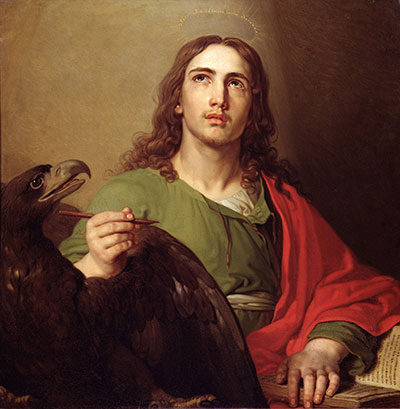On Dec. 26, the universal Church commemorates the death of St. Stephen in 34 A.D., the first man to give his life in witness to the faith. He is sometimes referred to as the "protomartyr."
St. Stephen was a Greek Jew who had converted to Christianity and who was ordained by St. Peter as one of the first deacons in the early Church. The sixth chapter of the Acts of the Apostles states that Stephen was "a man filled with faith and with the Holy Spirit ... filled with grace and fortitude." The Bible also notes that Stephen was a gifted orator and that his logic was sound. The conversions of many people are attributed to him.
However, his outspokenness provoked the ire of some of his listeners, particularly the Sanhedrin, and he was accused of blaspheming against Moses and against God. He was brought before the high priest in Jerusalem, and many false witnesses testified against him.
Acts recounts that, in his defense, he gave an eloquent analysis of salvation history and the love and mercy of God. He also recounted Israel's repeated ungratefulness towards their God. However, it didn't sway his accusers, who proceeded to take him outside the city and stone him. One of those who participated in the stoning was Saul of Tarsus, who would later be converted and become the Apostle Paul.
As he was about to die, Stephen looked up to heaven and said, "Behold, I see the heavens opened, and the Son of man standing at the right hand of God." Then, as he was being stoned, he cried out, "Lord Jesus, receive my spirit."
His last words, as the stoning had brought him to his knees, were "Lord, do not hold this sin against them."
In most Catholic art, Stephen is invested with a crown of martyrdom, holding three stones and a martyrs' palm branch. In Eastern Christian iconography, he is shown as a young beardless man with a tonsure, wearing a deacon's vestments, and often holding a miniature church building and a censer.
— Catholic News Agency
Take a closer look
Illustration: "The Martyrdom of St. Stephen," a fresco painted in 1324 by Bernardo Daddi, at Santa Croce in Florence, Italy
This famous Italian fresco (above) depicts the story of St. Stephen's martyrdom in two panels.
In the left panel, St. Stephen appears before the Sanhedrin judges, where they accuse him of blasphemy against Moses and against God. He is a young man, dressed in deacon's vestments and wearing a tonsure. As he defends the faith, he points heavenward and describes seeing "the heavens opened, and the Son of man standing on the right hand of God" (Acts 7:55).
In the right panel, Stephen is being stoned outside the gates of Jerusalem. But it's not an act of mob violence; it's a death sentence ordered by law when someone had been convicted of blasphemy. Stephen has been thrown down to his knees, while the men who had testified falsely against him cast the first stones. They have thrown off their outer cloaks, to make throwing the rocks easier.
The character who holds one man's coat and cheers on the sidelines is Saul – the future Apostle Paul, but at this point he is still a severe persecutor of Christians.
Typically the bodies of those stoned to death would be left to be eaten by animals. But Acts recounts that "devout men," most likely including Gamaliel (a wealthy Christian who would become the teacher of St. Paul and St. Barnabas), secretly came and took St. Stephen's remains to be entombed at his estate about 20 miles outside Jerusalem. His tomb was forgotten to history until rediscovered in 415 A.D., when Gamaliel appeared in visions to a priest named Father Lucien.
— Source: "The Catholic Encyclopedia" (1912), online at www.newadvent.org
 The feast day of St. John the Evangelist, one of the authors of the Gospels, is celebrated Dec. 27. Also known as St. John the Divine, the day honors John, the son of Zebedee and brother of St. James the Great, was called to be an Apostle by our Lord in the first year of His public ministry.
The feast day of St. John the Evangelist, one of the authors of the Gospels, is celebrated Dec. 27. Also known as St. John the Divine, the day honors John, the son of Zebedee and brother of St. James the Great, was called to be an Apostle by our Lord in the first year of His public ministry.
He became the “beloved disciple” and the only one of the Twelve who did not forsake the Savior in the hour of His Passion. He stood faithfully at the cross when Christ made him the guardian of His Mother.
His later life was passed chiefly in Jerusalem and at Ephesus. He founded many churches in Asia Minor and he wrote many important works, including the fourth Gospel and three Epistles (although many scholars believe that the final editing of the Gospel was done by others shortly after his death). The Book of Revelation is also attributed to him.
Brought to Rome, tradition relates that he was cast into a cauldron of boiling oil on the orders of Emperor Domitian but came forth unhurt, and then was banished to the Greek island of Patmos for a year.
He lived to an extreme old age, surviving all his fellow apostles, and died in Ephesus about the year 100.
St. John is called the Apostle of Charity, a virtue he had learned from his Divine Master, and which he constantly inculcated by word and example. A stately church was later erected over his tomb in Ephesus.
It was afterwards converted into a mosque.
— Catholic News Agency

